Mauritius Fish

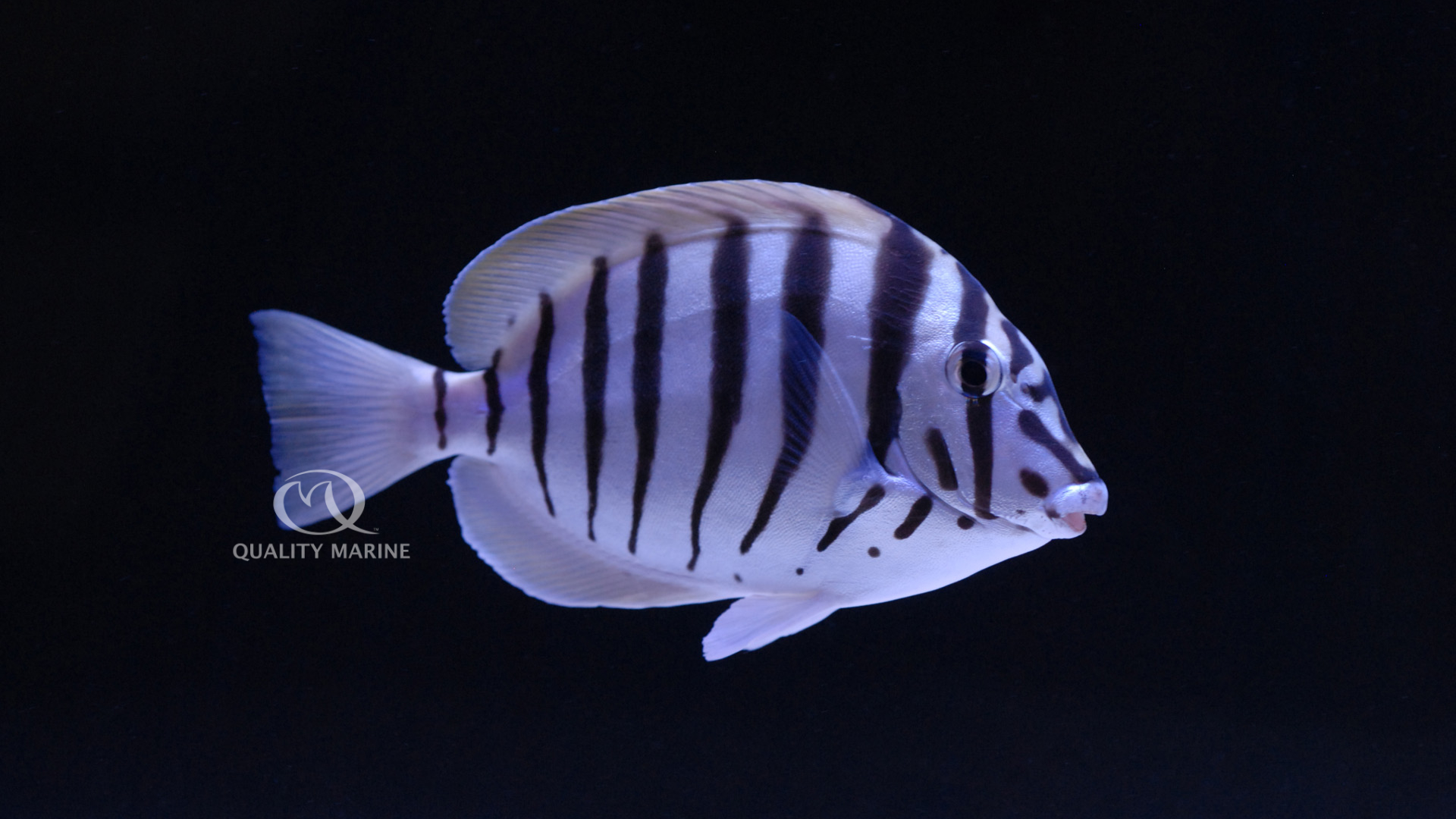 The Zebra Barred Tang (Acanthurus
polyzona) is likely
the rarest surgeonfish to grace a fish tank, certainly ranking in rarity with
the famous Gemmatum Tang. This surgeon is native to the Western Indian Ocean
near Madagascar, Comoro Islands, Mauritius and the Reunion Islands; a
distribution nearly identical to the Gem Tang. There is very little-known data
on this beautiful tang, but it is believed that they are collected in rocky
mangroves and near tidal pools. They
occur on reef flats and coral reefs around 15 meters deep.
The Zebra Barred Tang (Acanthurus
polyzona) is likely
the rarest surgeonfish to grace a fish tank, certainly ranking in rarity with
the famous Gemmatum Tang. This surgeon is native to the Western Indian Ocean
near Madagascar, Comoro Islands, Mauritius and the Reunion Islands; a
distribution nearly identical to the Gem Tang. There is very little-known data
on this beautiful tang, but it is believed that they are collected in rocky
mangroves and near tidal pools. They
occur on reef flats and coral reefs around 15 meters deep.
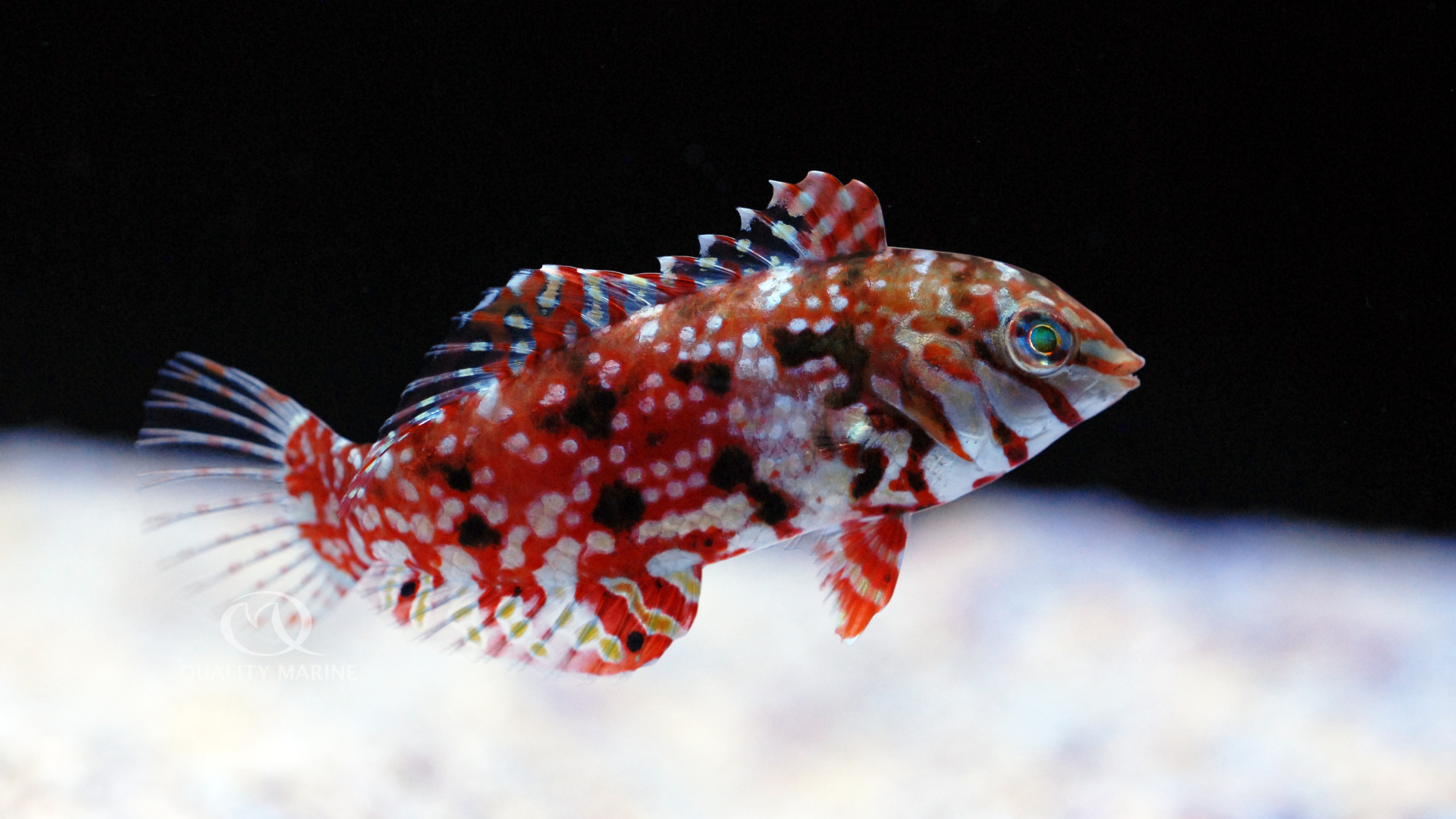
The Jewelled Wrasse (Halichoeres lapillus) is an exquisite fish with an elaborate pattern of red, tan and browns painted across their body. This spectacular species is found in the western Indian Ocean from Mozambique and Natal to Reunion, Mauritius and Madgascar, however, they are not commonly seen in the aquarium trade. So, Quality Marine has been ecstatic to receive them and have them available for purchase. They are found around the rocky bottoms of reefs and sea grass beds (5 to 15 meters) where algae is plentiful.
The terminal phase Pelicieri Wrasse (Halichoeres pelicieri) is another gorgeous Halichoeres wrasse that is endemic to the waters of Mauritius and expanded into South Africa. They can be found on the sand and rubble of reef slopes at depths of 20 to 35 meters, but there have been reports of them being found up to 85 meters deep. There is very little data on this species, except for that they are exquisite and are very sought after when they are available in the aquarium trade.
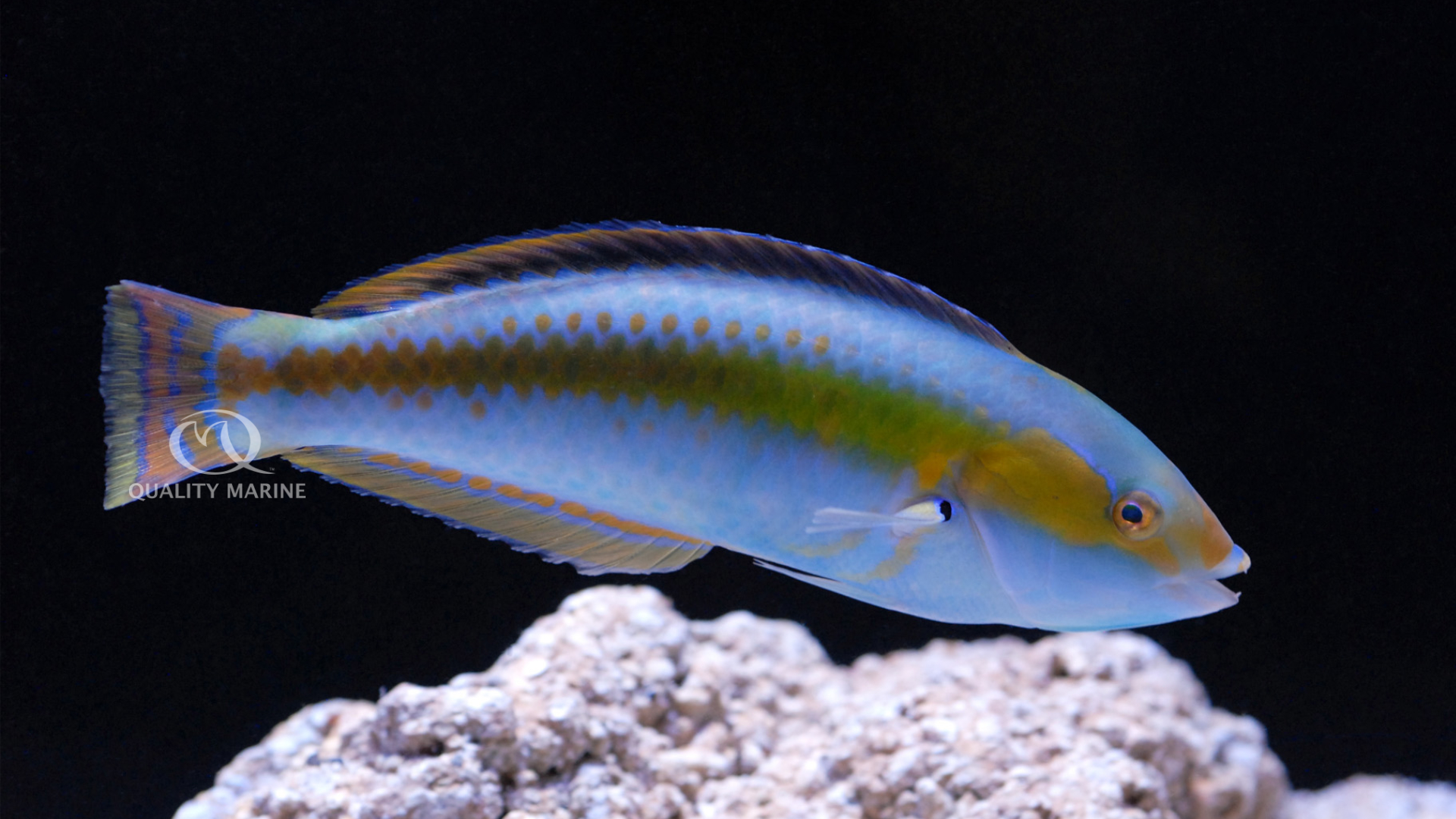
The Jewelled Wrasse and Pelicieri Wrasse will make an incredible show piece in fish only aquariums and similar care as other Hailchoeres should be taken. They are a rapacious predator of pretty much every nuisance invert in an aquarium, but this also means they may nip at clams, snails, starfish and small shrimp. It also means they are unlikely in the extreme to bother corals or anemones. Among the fish in the Genus, these are some of the more peaceful and can be kept in a group which makes a very cool display. Try to add all the fish to the display at one time if you are going to do this. They can also be kept with other fish in the genus, though some of the more aggressive and larger members may harass them. Since these are so rare it may not be the best idea to take the chance of mixing them with other wrasses.
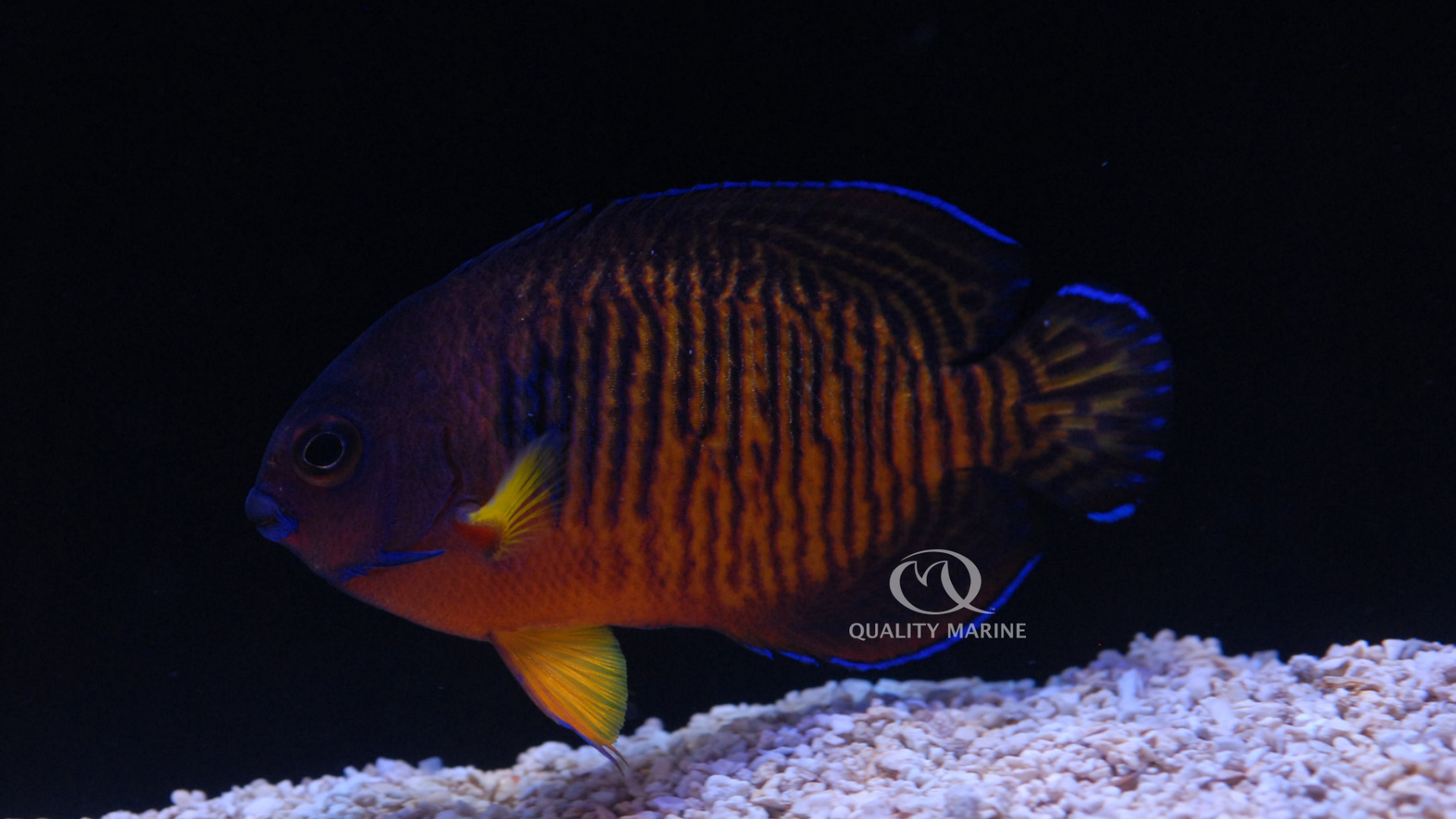 The Tiger Tail Coral Beauty (Centropyge
cf. bispinosus) is a beautiful variant of the ever popular Coral Beauty. It
isunclear if this is its own genetic species or the result of crossbreeding from
many generations before, but regardless this is a stunning specimen from
Mauritius. This color morph is extremely rare and Quality Marine is so excited
to have it for the first time. They grow slowly to a max size of
just under 4 inches for dominant males. Care for this guy mirrors the one for the most widespread dwarf angel,
Coral Beauty. They acclimate well and will generally take a wide
variety of foods very quickly, even segueing onto pelletized and flake foods in
short order. Other fish added after the Tiger Tail Coral Beauty that is a
similar size or shape may be bullied. While it is one of the better bets in the
Centropyge genus for reef aquariums, it can still be a risk, especially with
clams.
The Tiger Tail Coral Beauty (Centropyge
cf. bispinosus) is a beautiful variant of the ever popular Coral Beauty. It
isunclear if this is its own genetic species or the result of crossbreeding from
many generations before, but regardless this is a stunning specimen from
Mauritius. This color morph is extremely rare and Quality Marine is so excited
to have it for the first time. They grow slowly to a max size of
just under 4 inches for dominant males. Care for this guy mirrors the one for the most widespread dwarf angel,
Coral Beauty. They acclimate well and will generally take a wide
variety of foods very quickly, even segueing onto pelletized and flake foods in
short order. Other fish added after the Tiger Tail Coral Beauty that is a
similar size or shape may be bullied. While it is one of the better bets in the
Centropyge genus for reef aquariums, it can still be a risk, especially with
clams.
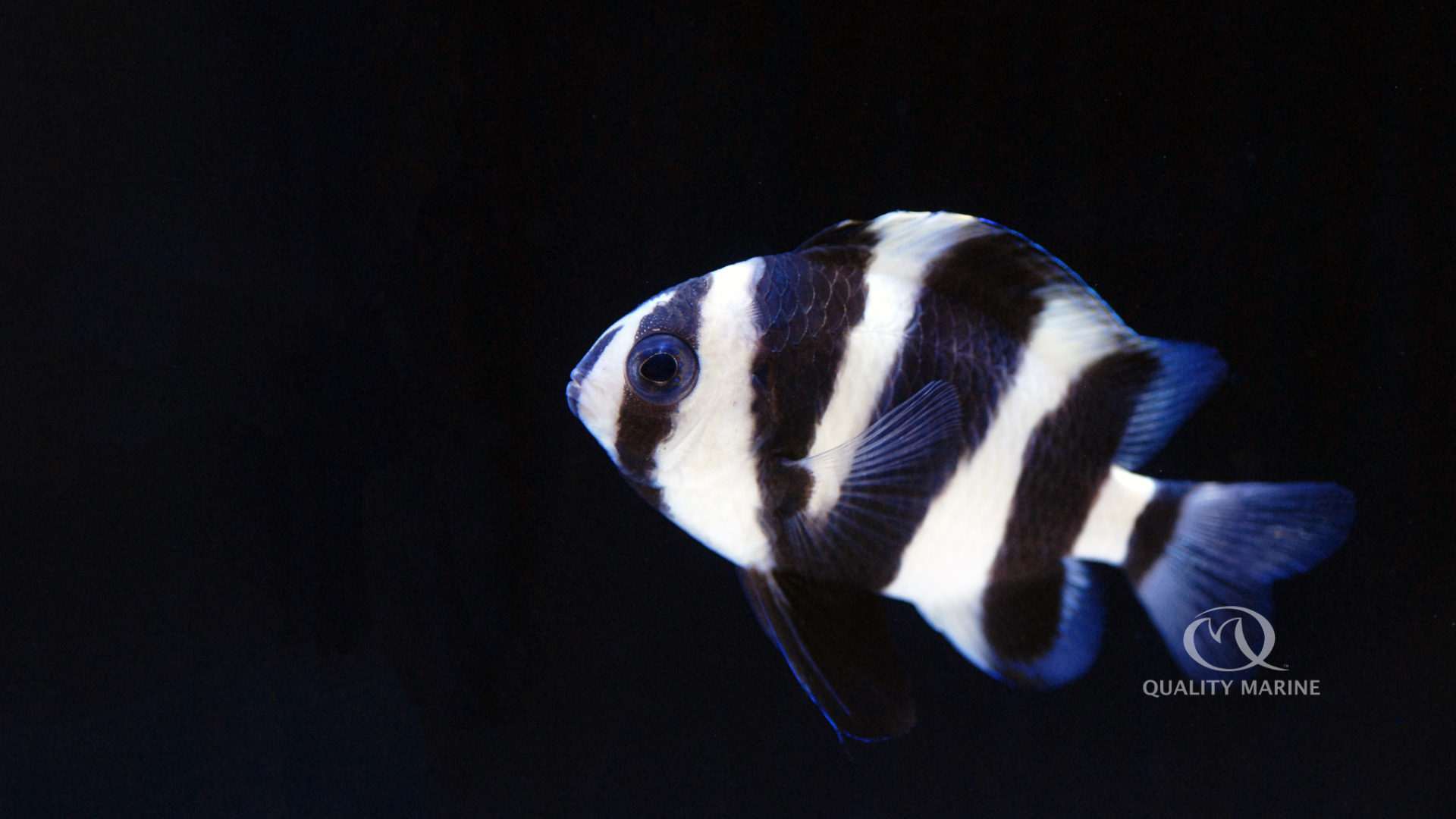 Damselfish are
popular fin the marine aquarium hobby and for good reason. They are very
active, hardy, stay small, early always inexpensive, and common. Sadly, that
last trait actually hurts them, as some see them as “too boring”. Footballer or
Tiger Damsels (Chrysiptera annulata)
stand out against the rest. While they are found in abundance on the tropical
and subtropical reefs of the western Indian Ocean, they are not commonly
collected and seen in the trade. The long flights, remoteness of collection
locations, and even piracy make them difficult or risky to collect over much of
their range. So on the rare occasion when we do receive a shipment of them,
there is a great deal of excitement.
Damselfish are
popular fin the marine aquarium hobby and for good reason. They are very
active, hardy, stay small, early always inexpensive, and common. Sadly, that
last trait actually hurts them, as some see them as “too boring”. Footballer or
Tiger Damsels (Chrysiptera annulata)
stand out against the rest. While they are found in abundance on the tropical
and subtropical reefs of the western Indian Ocean, they are not commonly
collected and seen in the trade. The long flights, remoteness of collection
locations, and even piracy make them difficult or risky to collect over much of
their range. So on the rare occasion when we do receive a shipment of them,
there is a great deal of excitement.
In coloration, they look similar to the Three Stripe Damsel (Dascyllus aruanus), though there is a fine line on the snout of the Chrysiptera, where the Dascyllus has a white spot. The Footballer has magnificent pelvic fins that make them bear a passing resemblance to another QM favorite, the Banggai Cardinal. On the husbandry side of things, they are just as hardy as most other demoiselles, requiring no special care outside what aquarists should expect for any other damselfish. Chysiptera annulata seem to be much less aggressive than many other fish in their family, making them more appealing to many hobbyists. Quality Marine is proud to add another excellent, sustainably collected fish to our already incredibly diversity of livestock offerings.
Not many of these fish show up frequently in the aquarium hobby, so it’s quite a treat for us to see them showing up here at Quality Marine. It is such a privilege to have them available and this opportunity is not taken lightly. All in all, these are a hardy, gorgeous and uncommon fish with total fish collector geek